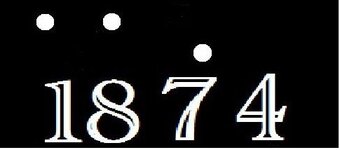L.C. BAKER
Silver Member
When I read this the first time I had to chuckle. Can anyone else hunting for a K.G.C. or O.A.K. cache attest to the truth of this statement? For what it's worth I think it adds some credibility to whoever it was that wrote it, because they sure knew what they were talking about!
L.C.
L.C.


 . I will never have the time to check it out myself, but if anyone is close by Danville Virginia and would care to drop by Green Hill Cemetery and take a good look at it and take some pictures close up that may show some symbolism I would love to see them. This is a nice video with some commentary on the cemetery at Danville. About halfway through it you will see an oak monument although I can not be sure if it is the one that I saw in the background of the program with Bob Brewer, there may be more than one there, and there may be no connection at all.......but I would look at it pretty hard if I ever got the chance to.
. I will never have the time to check it out myself, but if anyone is close by Danville Virginia and would care to drop by Green Hill Cemetery and take a good look at it and take some pictures close up that may show some symbolism I would love to see them. This is a nice video with some commentary on the cemetery at Danville. About halfway through it you will see an oak monument although I can not be sure if it is the one that I saw in the background of the program with Bob Brewer, there may be more than one there, and there may be no connection at all.......but I would look at it pretty hard if I ever got the chance to.

